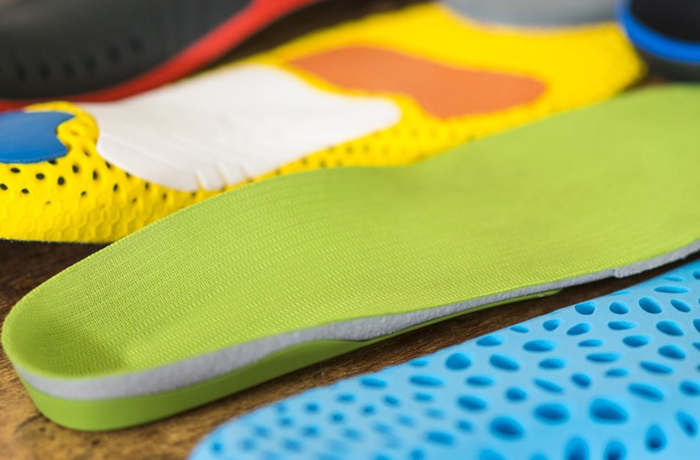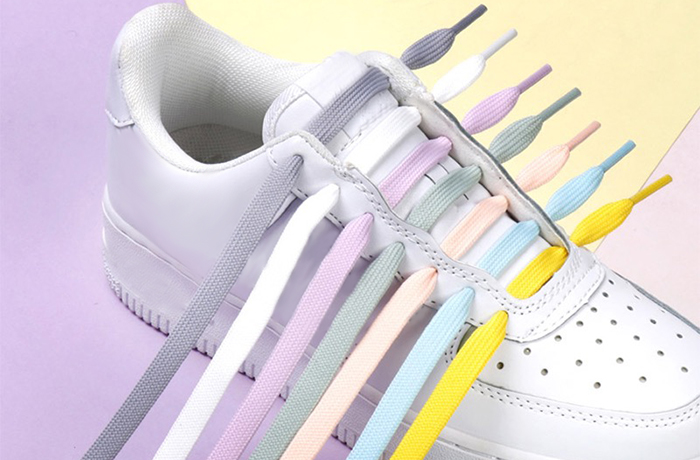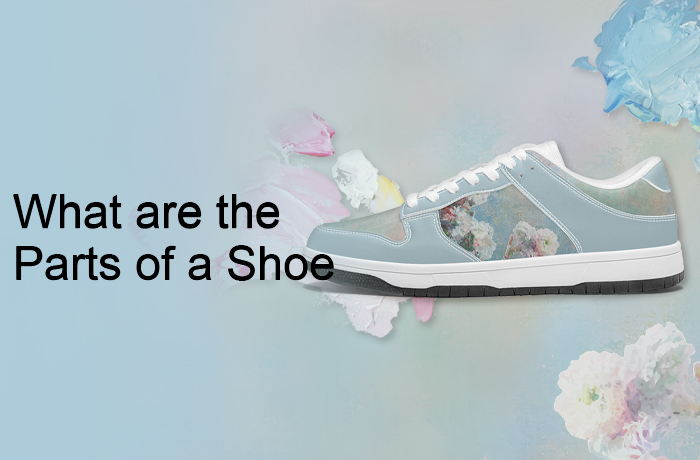A shoe is made up of many different high-quality materials. Learning about these components can help you make an informed decision about your next shoe purchase. When suppliers use different terms to describe footwear parts, it can make you feel less neglected. Simultaneously, familiarize yourself with the various parts of the shoe to avoid misusing some key words.
Main parts of a shoe
Toe Cap, Toe Vamp, Tongue, and Outer sole are the most basic components of a shoe. However, other minor components make up the remainder of the shoe. Collar, Heel Tab, Heel Counter, Logo, Midsole, Foxing, Eyelets, Insole, and shoelace are among them. The construction of these shoes will increase the shoe’s comfort and stability.
I’ll explain the shoe’s components in the order shown in the image below.

Toe Cap
The toe cap is the part of the shoe that covers the toe. It can be made of leather, suede or other materials. The toe cap protects the front of your shoe from wear and tear.
Toe caps often have a reinforced area at their top to provide extra protection to this vulnerable area of your footwear. They may also have metal plates embedded in them to protect them from impact damage if you should ever drop something heavy on them (as happens occasionally when dropping things).
Toe Vamp
A toe cap, also known as a vamp, is the part of a shoe that covers your toes and gives you comfort when you walk. It may be made of leather or other materials such as rubber or plastic. The toe cap can be high (covering most of your toes) or low (covering just the front of your toes). It can also be tapered or rounded—the tip will usually point upward in one direction or another. Some toe caps are decorated with embroidery or perforations to make them more interesting visually; others are plainer but still give plenty of support while walking on hard surfaces like concrete streets.
Eyelets
Eyelets are small holes in your shoes that allow you to tie shoelaces. They’re usually metal, but can also be plastic. The most common placement for eyelets is on the sides of your shoe near its front edge, although some boots have them elsewhere as well.
Tongue
The tongue of a shoe is the piece that extends from the vamp and through the laces. Its purpose is to protect your foot from pressure points, which can cause blisters and discomfort. Think about it this way: if you have ever worn shoes without tongues, you know how uncomfortable they feel when you walk.
A tongue can be made of different materials and in different shapes. Some are more flexible than others, while some are more supportive or rigid, depending on what type of activity they’re designed for (for example, basketball shoes versus running sneakers).
The location of a shoe’s tongue depends on its design—some may be above or below where your feet rest inside the shoe. When lacing up your shoes with tongues, ensure that they are snug enough so they don’t slip but not tight enough to hurt your feet as well as comfortable enough so that they don’t move around too much while walking around town or dancing at weddings!
Collar
The collar is the part of the shoe that covers your ankle. It usually consists of a single large piece of leather or other material, and it may be padded to give you comfort and protection. The collar can also be high, low or somewhere in between; it all depends on what you prefer!
Heel Tab
The heel tab is a small piece of leather or other material that attaches to the back of the shoe. It can be stitched, glued or sewn into place and helps keep the back of your shoe together.
Heel Counter
The heel counter is a piece of material that is stitched to the upper of a shoe. It provides support and reinforcement to the heel, as well as an aesthetic feature that may be noticeable from inside or out. A leather heel counter will usually have a seam visible where it meets the sole, while plastic versions are often seamless.
Outer sole
The outer sole is the bottom part of a shoe. It’s made of rubber or plastic, and it protects your feet from sharp objects on the ground. The outer sole can wear out with time, so you may need to replace it if that happens.
Logo
A shoe’s logo is a brand’s name, symbol or other graphic representation. It is commonly found on the tongue of a shoe, but may also be placed elsewhere on the shoe. The main purpose of logos is to help identify different brands and make them easily recognizable by consumers.
The leather patch where the logo is typically placed can be custom-made, embossed with an individualized message or simply stamped with an image of the brand’s mascot animal.
Midsole
The midsole is the part of the shoe that sits between the outsole and insole. The midsole is made of EVA (Ethylene-vinyl acetate), rubber or plastic, and provides cushioning and support to your feet. The midsole also protects your feet from shock.
The midsole is a very important part of any shoe because it can affect how comfortable or stable you feel while walking on different surfaces. For example, a flat running shoe will have more cushioning than a basketball sneaker with extra padding in key areas like under your toes or around your heel for added stability when jumping for rebounds.
Foxing
Foxing is a strap that wraps the sole’s sidewall around the entire shoe. It is usually separated from the sole and upper to repair the joint where the upper and sole meet, which is usually connected by a vulcanization process, which is common in sports shoes.
Insole
The insole is the innermost part of your shoe, located closest to your foot. This is usually made of cork, rubber or plastic. The insole provides comfort and support to your foot by absorbing shock and distributing pressure evenly across the sole of your foot.
The insole can be removed from a shoe if you want to replace it with another one or add more cushioning underfoot. It is also removable so that orthotics (custom-made insoles) can be inserted into some shoes.

Shoelace
The shoelace is a cord that holds your shoes together. It’s also called lacing system because it helps you tighten and loosen the shoe by pulling on each end.The shoelace is made of either cotton or nylon, and it can be found in almost any color imaginable.



0 Comments